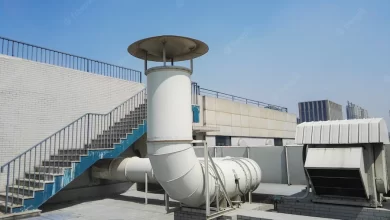What are the steps in building a foundation?

Building the foundation
This is an important stage as the dimensions of the foundation have to be perfectly right because otherwise, the future spaces will be affected. The foundation depth depends on the soil quality and the design of the foundation is decided by the site conditions. The excavation drawing and foundation details are prepared by the structural designer and approved by the Architect.
MARKING THE EXCAVATION:
Marking: The excavation plan is marked by the contractor at site and the dimensions are cross-checked by the Architect. It is advisable that you also check the dimensions as any mistake can be brought to the Architect’s and Contractor’s notice so that it can be rectified before it is late. Once the marking has been approved, the excavation can begin.
Depth of excavation
The excavation depth depends on the soil condition. Digging is done till hard soil is reached.
Filled up soil
If your site/Layout is formed on lakes or low-lying areas, it may have a lot of filled up soil. In such areas excavation must be done till firm ground is reached. Make sure the building is resting on solid ground even if it means you have to go 15 feet down, because otherwise it will affect the stability and strength of the house.
Anti-termite treatment
Before laying the foundation, make sure that the trenches and excavated areas have been given the anti-termite treatment by the Contractor. This will ensure protection against termites and other pests from underground, in the future.
BUILDING THE FOUNDATION
Once the excavations are done, the next step is to build the foundation.
Load bearing structure foundation
A bed of concrete (PCC) is laid at the base of the trenches and the foundation is built using size-stones.
Column-beam frame structure system
In this case, a mat of steel bars tied together and placed at the bottom of the footing pit. The steel bars for the column are also tied in place with the help of binding wire. Column boxes are erected around it for pouring concrete.
Pouring concrete
After the approval of the steel details and the quality of work, the concrete can be poured. Concrete can be prepared at site or the contractor may opt for ready mix concrete (RMC) as per the requirement.
Plinth Beam
After the concrete columns have been raised to the Plinth beam level, the plinth beam is erected for the walls of the house to rest on.
CURING OF FOUNDATION:
Curing is very important during the construction period. If not done properly, cracks can appear and even the strength and life of the building components can be affected. Curing ensures that certain chemical reactions take place which strengthen the structure.
Chemical reaction during curing
There are two types of chemical reactions, one that releases heat during the process (Exothermic) and another that absorbs heat (Endothermic). The mixing of cement with water is an exothermic reaction due to the presence of lime stone. Because of this heat generation, the water in the mortar or concrete mix evaporates even before the compound gains strength. But for the structure to gain maximum strength, chemical reactions in a cement compound must go on and this can happen only in the presence of water and at an ambient temperature. Hence there is a need to preserve the water content and the ambient temperature and this is achieved by regular curing.
Starting the Curing process
Curing should start from the very next day after the concrete has been poured. Initially more water will be absorbed by the concrete elements, but after a week, the water required will be much less. If there is water runoff when water is poured on a new construction, curing should be stopped. The hotter the outside temperatures more amount of curing is required. Curing should be done at least twice a day though three times is better
Curing of Columns
For columns, the preferred method is to wrap the pillar with wet gunny bags and then wetting them regularly. This is done because, while pouring water, the column does not absorb much water as it flows away. So to ensure that the column gets cured evenly, the gunny bag method is used. Sometimes a plastic bottle or polythene bag with a small hole is placed on the column so that the water drips steadily and the gunny bags are wet all the time.
Know how stairs are constructed?
Are you going to build or renovate your house/office and thinking a lot about the types of stairs that will create a stunning impact on your infrastructure? Then Architect Designers and Civil Builders is here to solve your every problem regarding the choice of stairs within your space.
As you all know a stair is a combination of steps in different forms or shapes within the building that helps in connecting the one portion of the building to the other portion. The room where the stair is built knows as a staircase. Our Builders make the best staircase in your commercial or residential place.
There are a lot of stairs designs available in the design books and on the Internet when people decide to install the stairs in their homes or offices, they often consult with their colleagues, relatives, friends, and neighbors. Everyone makes their house with surprising architecture. People spend a lot of money to make their house wonderful in front of every one according to their pocket. And Our Construction Company offers you everything in one place within your budget requirements.
CONSTRUCTION OF STAIRCASE:
Staircase drawings
The Contractor has to follow the staircase drawing given by the architect along with the structural staircase details prepared by the structural designer. The construction of the staircase depends on the design and materials used.
Slight slope of tread
The treads should very slightly slope towards the front for comfort in climbing and to make sure that the rainwater in open staircases does not stagnate and will flow out.
Grooves in treads
It is advisable to have 2 or 3 groove marks along the length of the tread towards the outer edge, to give proper grip to the climber. Grooves can be cut in the flooring material used to cover the steps – whether it is Kadappa or Granite.
Different Types of Stairs
There are varieties of stairs structure that you can construct in your home or any building at affordable prices. These are as follows:
Straight Stairs:
These are the oldest and most commonly used staircase in both the residential or commercial areas. Our Construction Company builds this staircase easily. This staircase has a single path of steps without turning point between the steps. It connects the ground portion to the upper portion of the building. It is just like a ladder.
L- Shaped stairs
The L shape staircase is a deviation of straight stairs with the bending point after a few steps in the staircase. It is also known as a quarter landing stairway by forming a 90-degree angle between quarter steps depending on the infrastructure of the buildings.
U- Shaped stairs:
The U- shaped Stairs are also known as Half Turn stairs. They make two 90 degrees angle in parallel position within the half-turn steps. These staircases have also common usage in the large residential areas or commercial areas. The people who are struggling with straight stairway find it better with the large turning point between steps for rest.
Winder stairs:
The Winder staircase is a type of L- shaped stairs with some variations .They are forming pie shape steps and triangle shape steps between the staircases in a turning point. This design is commonly used in old homes and offices. These stairs are in wedge shape gives a turning point with 90 degrees on single winder step and 180 degrees with double winder steps.
Conclusion
Once you have decided the type of construction method that you want to adopt, then the next step is to build the foundation. Likewise the foundation of the building should be strong as much as required to lead a long life. Additionally, reach out to the reliable builders in coimbatore who are the best and experienced Home builders and best construction firm to get started on your custom home.




